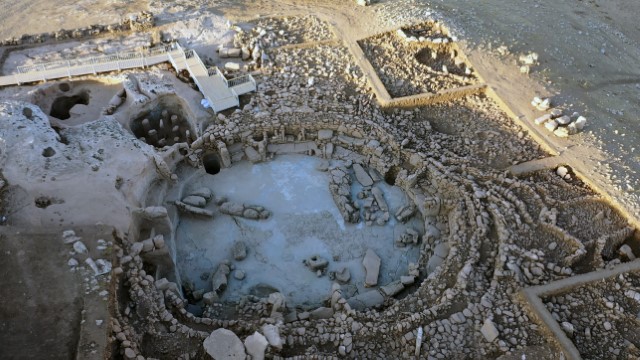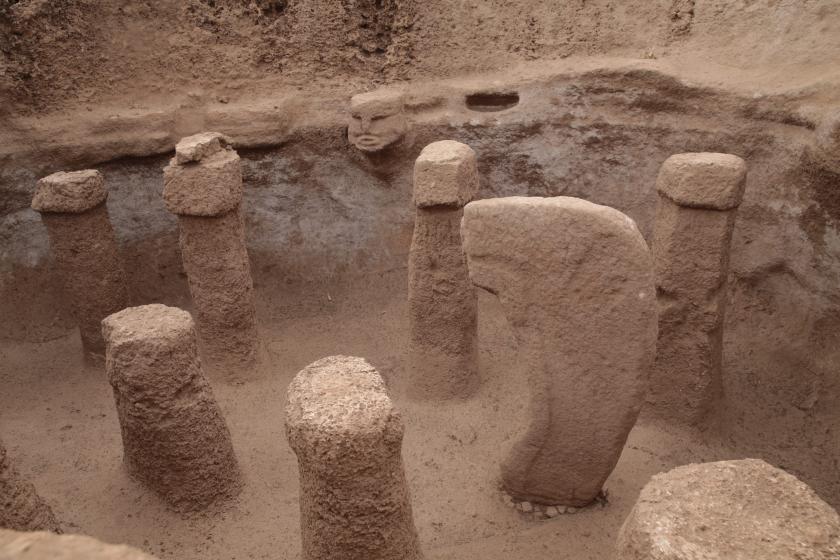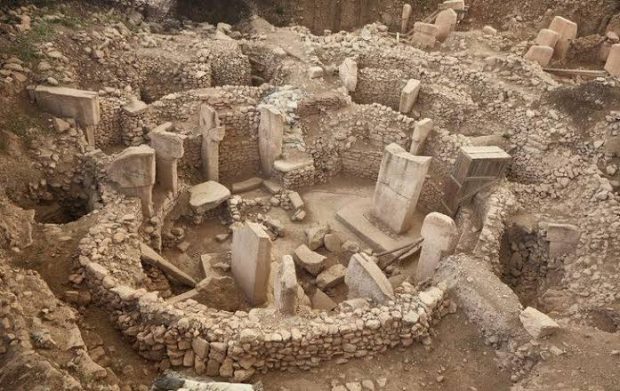Located in Tek Tek Mountains National Park, 55 kilometers from Şanlıurfa city center, Karahantepe was discovered in 1997. The limestone layers in the area where Karahentepe is located provided both materials for the structures and raw materials for the construction of the obelisks, as in other contemporary places. This limestone was easy to work with and played a major role in the construction of monumental structures and large obelisks here.
Excavations in Karahantepe, which covers an area of 140,000 square meters, started in 2019. More than 250 obelisks similar to those at Göbeklitepe were partially visible from the surface. There are human and animal depictions on the surfaces of these obelisks, which indicate the existence of dozens of structures carved into the bedrock. In addition to the animal depictions that stand out in Karahantepe and Göbeklitepe, more human depictions come to the fore.
During the excavations carried out in Karahantepe this year under the direction of the excavation director Prof. Dr. Necmi Karul, many sculptures such as four different structures and a human statue carrying a leopard on its back were unearthed. The finds were moved to the Şanlıurfa Archeology Museum and opened to visitors.



Surface scans and geomagnetic measurements show that there are four distinct sections in Karahantepe.
AB Structure
It is thought that the AB Structure, which was carved into the bedrock with dimensions of 8×6 meters, was built for special purposes. There is a human head in the middle of the long wall of the building. A male is depicted on the head, whose neck resembles a snake, protruding from the rock. Opposite this head, four phallus-shaped obelisks were placed in the front row and six in the back row. The building was descended from one side with a ladder and from the other side was accessed by another ladder. Within the scope of all these, the building is thought to have a ritualistic function.



AD Structure
Most of the AD Structure, which is 23 meters in diameter, was built by carving into the bedrock. Obelisks were placed between the walls of the building. Between these obelisks, benches consisting of two steps were built. However, the sections between some obelisks are different from others. Therefore, different areas may have been used for different functions. At the same time, this structure was transitioning to the AB Structure. Therefore, these two structures are thought to be parts of a complex. Later it turns out that the structure was partially destroyed and was deliberately buried by soil carried over from the environment.
AA Structure
Carved into the bedrock like the adjoining Structure AB, this structure was built in an oval plan with a bench along its western edge. This terrace is descended from the outside surface with two steps. On the face of the bench, there is a depiction of a snake stretching from one end to the other, and a fox depicted just below the steps at the end of it. It is thought that the construction of the structure has not been completed yet, as the structure is about half deeper.



AC Structure
There is a bench along the south wall of the AC Structure, which is also a structure carved into the mainland. This building, like other contemporary structures, was intentionally filled and buried. Flat stones were used in the last stage of this filling process.
